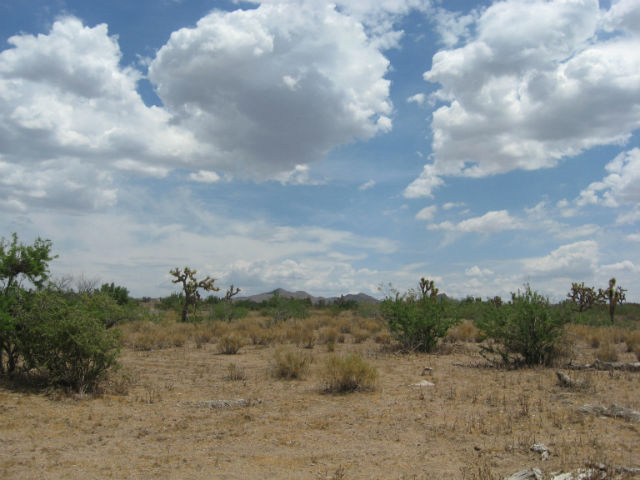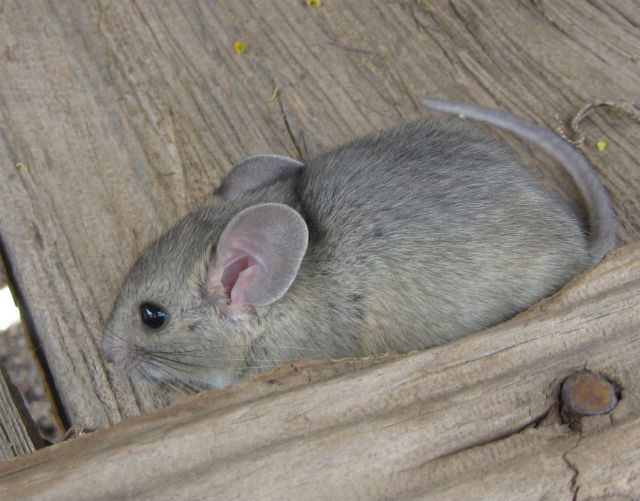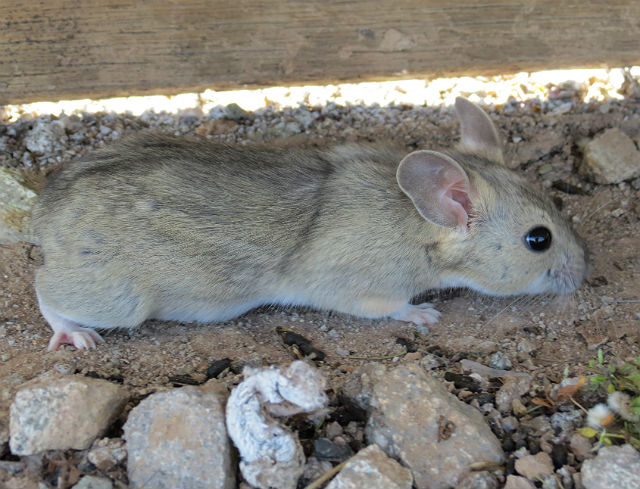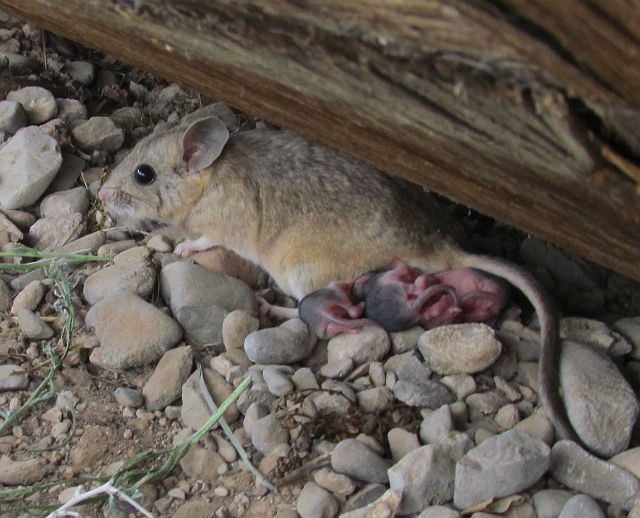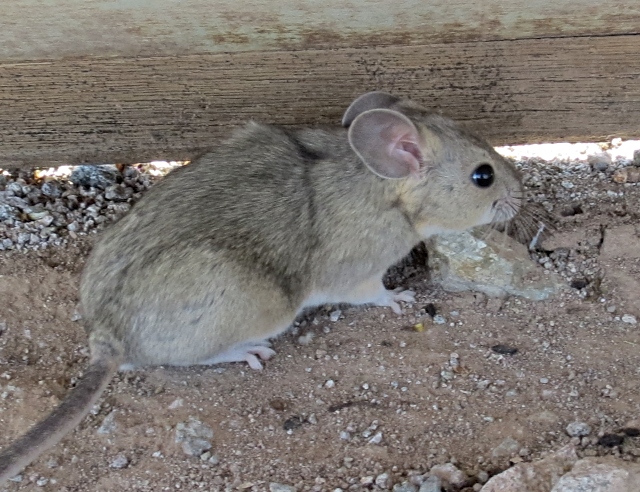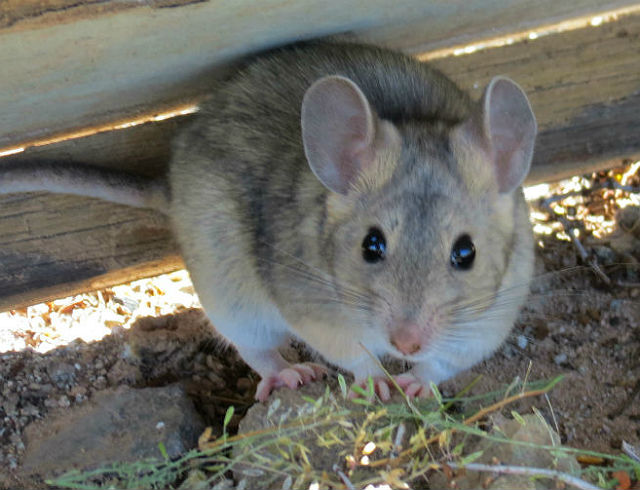We usually think of wild rats as not particularly attractive, but the Desert Woodrat, a species of Pack Rat, is actually kind of cute. I regularly encounter them on outings to the Las Vegas area.
They feed on beans and leaves of mesquite, on juniper and on parts of cacti, apparently without getting injured by the spines. They will also eat other green vegetation, seeds, fruits, acorns and pine nuts. They are highly dependent upon Prickly Pear Cacti for water.
Desert Woodrats inhabit scrublands in desert and semi-desert areas. Their houses are constructed with twigs, sticks, cactus parts and rocks, depending on availability of building materials. The house usually is built against a rock crevice, at the base of creosote or cactus, or in the lower branches of trees.
These rodents are aggressively solitary. Desert Woodrats may defend succulent plants (a water source) against other species. Desert Woodrats do not drink water; instead water is obtained from the succulent, moisture-containing plants that are normal to their diet.
This species of Woodrat has two to four litters per year, and sometimes five. After a gestation period of about 30 days, usually two to four blind, naked, and helpless young are born per litter. Offspring become sexually mature at about two months of age.
Woodrats are commonly called “Pack Rats” because they have a tendency to collect any curious object they find, especially those that are small, bright, and shiny. They “pack” these items back to their house or den. Should they find something more interesting, the first treasure is dropped to pick up the new one.

